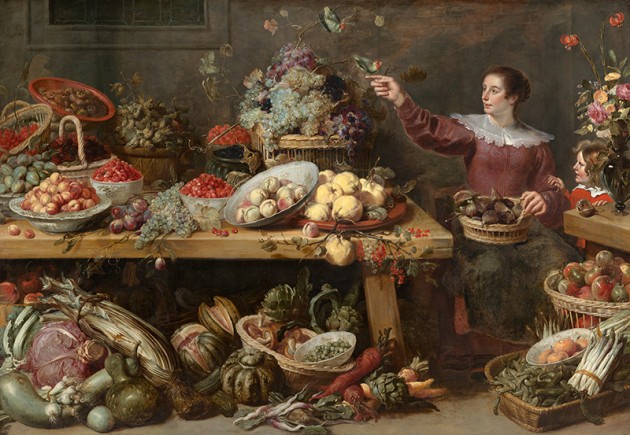All Consuming: Art and the Essence of Food
Food and drink are the subject of many pieces of European art. These images offer aesthetic appeal and reveal actions and dynamics—indulging, abstaining, buying, selling, making, growing, craving and sharing—that give food profound social meaning.
The Norton Simon Foundation’s All Consuming: Art and the Essence of Food explores how artists responded to and shaped food cultures in Europe from 1500 to 1900, as shown in a group of 60 paintings, prints, photographs and sculptures from the Norton Simon’s collections. Three distinct themes—“Hunger,” “Excess” and “Sustenance”—examine a range of relationships with eating and drinking, both positive and negative, displayed across two galleries. Using images of charity, war and religious asceticism, “Hunger” addresses the many faces of food deprivation, whether as something to be remedied, feared or even admired. “Excess” reveals depictions of morally questionable consumption in raucous tavern scenes and images of exoticized decadence, which reinforced historically specific attitudes about gender, class and race. “Sustenance” examines how agricultural landscapes and bountiful pantries evoke comfort and plenty and how they are associated, particularly in northern Europe, with labor and commerce.
The third and final gallery brings the exhibition’s broader themes closer to home through Edward Weston’s and Manuel Alvarez Bravo’s photographs of California and Mexico in the 1930s. Weston’s sweeping views of ranches and vineyards offer a picturesque vision of food production in California, whereas Alvarez Bravo’s photographs of restaurants and drinking fountains capture casual, day-to-day encounters with food and drink. These works will be adjacent to a response space that invites viewers to contemplate art’s continued role in shaping our relationship with food, not just as a necessity for survival, but as an essential for cultural life.






